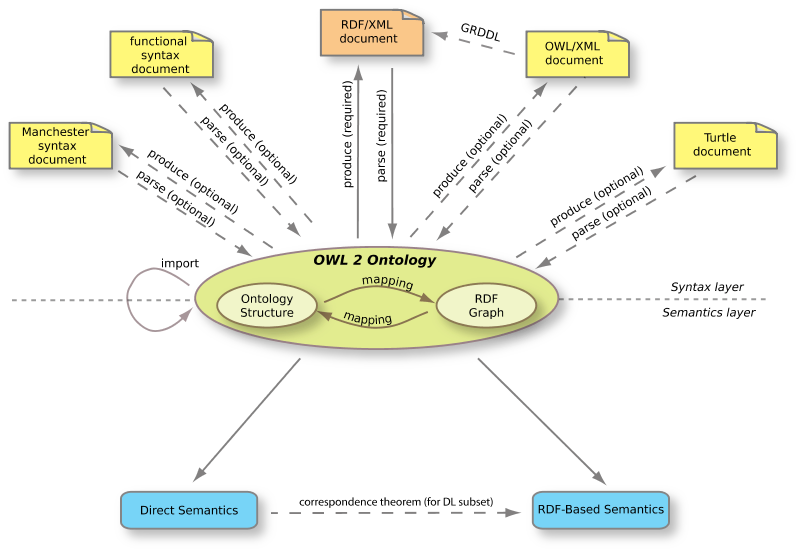Semantic Web is an extension of the World Wide Web through standards set by the World Wide Web Consortium (W3C). The goal of the Semantic Web is to make Internet data machine-readable. To enable the encoding of semantics with the data, technologies such as Resource Description Framework (RDF) and Web Ontology Language (OWL) are used.
These technologies are used to formally represent metadata. For example, ontology can describe concepts, relationships between entities, and categories of things. These embedded semantics offer significant advantages such as reasoning over data and operating with heterogeneous data sources.
Ontology, Knowledge Graph
Ontology encompasses a representation, formal naming and definition of the categories, properties and relations between the concepts, data and entities that substantiate one, many or all domains of discourse. More simply, an ontology is a way of showing the properties of a subject area and how they are related, by defining a set of concepts and categories that represent the subject.
Common components
- Individuals, Instances or objects (the basic or “ground level” objects)
- Classes, Sets, collections, concepts, classes in programming, types of objects or kinds of things
- Attributes, Aspects, properties, features, characteristics or parameters that objects (and classes) can have
- Relations, Ways in which classes and individuals can be related to one another
- Function terms, Complex structures formed from certain relations that can be used in place of an individual term in a statement
- Restrictions, Formally stated descriptions of what must be true in order for some assertion to be accepted as input
- Rules, Statements in the form of an if-then (antecedent-consequent) sentence that describe the logical inferences that can be drawn from an assertion in a particular form
- Axioms, Assertions (including rules) in a logical form that together comprise the overall theory that the ontology describes in its domain of application. This definition differs from that of “axioms” in generative grammar and formal logic. In those disciplines, axioms include only statements asserted as a priori knowledge. As used here, “axioms” also include the theory derived from axiomatic statements
- Events, The changing of attributes or relations
Tools
- Protégé, A free, open-source ontology editor and framework for building intelligent systems.
- RDFox, High performance knowledge graph and semantic reasoning engine.
- Apache Jena, A free and open source Java framework for building Semantic Web and Linked Data applications.
- GraphDB allows you to link diverse data, index it for semantic search and enrich it via text analysis to build big knowledge graphs.
Metadata
Metadata is “data that provides information about other data”. In other words, it is “data about data.” Many distinct types of metadata exist, including descriptive metadata, structural metadata, administrative metadata, reference metadata and statistical metadata.
Resource Description Framework
Resource Description Framework (RDF) is a family of World Wide Web Consortium (W3C) specifications originally designed as a metadata data model.
It has come to be used as a general method for conceptual description or modeling of information that is implemented in web resources, using a variety of syntax notations and data serialization formats. It is also used in knowledge management applications.
Web Ontology Language
Web Ontology Language (OWL) is a family of knowledge representation languages for authoring ontologies. Ontologies are a formal way to describe taxonomies and classification networks, essentially defining the structure of knowledge for various domains: the nouns representing classes of objects and the verbs representing relations between the objects.

